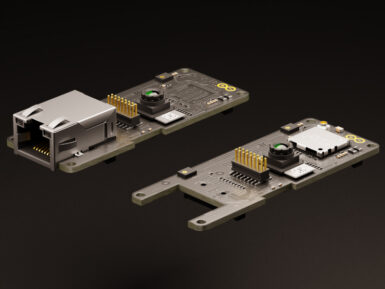
Overview
This is a photoelectric water liquid level sensor that operates using optical principles.
The advantages of this photoelectric water liquid level sensor are good sensitivity and no need for mechanical parts - meaning less calibration!
The corrosion resistant probe is easily mounted and can handle high temperature and high pressure.
The arduino liquid sensor is equipped with an interface adapter for compatibility with the DFRobot "Gravity" interface.To ease the difficulty of using this arduino liquid sensor, a Gravity Interface is adapted to allow plug&play.
The Arduino IO expansion shield is the best match for this sensor connecting to Arduino, as this liquid sensor is able to work at 3.3V which makes it compatible with Raspberry Pi, intel edison, joule and curie.
Note: Avoid placing the sensor near bright lights or in direct sunlight as these can cause interference.
Tech specs
- Operating voltage: 5 VDC
- Output current: 12 mA
- Working temperature: - 25 ~ 105 ℃
- Low level output: < 0.1 V
- High level output: > 4.6 V
- Liquid level detection accuracy: ±0.5 mm
- Material: PC
- Measuring range: No limit
- Life: 50,000 hours
Get Inspired

This project demonstrates how to automatically censor (ban) faces in a live video stream to ensure privacy using the Portenta H7 and the Portenta Vision Shield.

We’re excited to announce the launch of the Arduino Portenta Vision Shield, a production-ready expansion for the powerful Arduino Portenta H7 that adds a low-power camera, two microphones, and connectivity — everything you need for the rapid creation of edge ML applications. Always-on machine vision The Portenta Vision Shield comes with an ultra-low-power Himax camera. The camera module autonomously detects motion while the Portenta H7 is in stand-by — only waking up the microcontroller when needed. Voice and audio event recognition The Portenta Vision Shield features two ultra-compact and omnidirectional MP34DT06JTR microphones, bringing voice recognition and audio event detection. Both the video and audio data can be stored on an SD card, and transmitted through Ethernet or LoRa® modules (plus option of the WiFi or BLE on the Portenta H7 module). Additional LoRa® or Ethernet connectivity The powerful Arduino Portenta H7 makes machine possible learning on-device — greatly reducing the communication bandwidth requirement in an IoT application. The LoRa® module option is specifically designed for edge ML applications, enabling low-power, long distance communication over LoRa® wireless protocol and LoRaWAN networks. The Ethernet version is perfect for all those wired applications that need high bandwidth data transfer speed. (N.B. The LoRa® and Ethernet connectivity options on the Portenta Vision Shield are in addition to the existing WiFi and BLE connectivity provided by the Portenta H7 module.) Embedded computer vision made easy In tandem with the launch of the Portenta Vision Shield, Arduino has teamed up with OpenMV to make their IDE fully compatible with the Portenta. The OpenMV IDE provides an easy way into computer vision using MicroPython as a programming paradigm. There are an abundance of AI/ML algorithms available straight ‘out of the box’ providing a user experience we are sure you will








